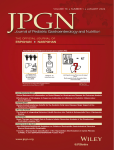Percutaneous Endoscopic Gastrostomy in Children and Adolescents
Abstract
Background:
Long-term nasogastric tube feeding is often associated with irritation of the hypopharynx or dislocation of the tube. These pitfalls may be circumvented by percutaneous endoscopic gastrostomy. Although frequently used in adults, there is limited experience with the procedure in children.
Methods:
A series of 139 patients (aged 3 weeks to 36.5 years, mean age, 4.4 years; weight 3.1-60 kg, mean weight, 15 kg) underwent placement of a percutaneous endoscopic gastrostomy because of central dysphagia (n = 103); general dystrophy caused by chronic renal failure, congenital heart disease, neoplasms, or cystic fibrosis (n = 26); requirement for special diets (n = 7); malnutrition related to respiratory insufficiency (n = 2); and gastric volvulus (n = 1).
Results:
The percutaneous endoscopic gastrostomy was placed either in the stomach (n = 122) or in the duodenum (n = 15). In two patients a direct percutaneous endoscopic jejunostomy was performed, because duodenal placement proved impossible. Percutaneous endoscopic gastrostomies were placed using intravenous sedation (midazolam, etomidate, or diazepam). None of the patients required general or inhalation anesthesia. We observed 19 complications including: dislocation of the duodenal part into the stomach (n = 5); inflammation at the insertion site (n = 3); perforation of the stomach (n = 2), which healed under conservative treatment; disconnection of the retention disk (n = 4); occlusion of the tube (n = 4), and chronic vomiting (n = 1). Mean lifetime of a percutaneous endoscopic gastrostomy was more than 1 year.
Conclusions:
Percutaneous endoscopic gastrostomy provides a major improvement for children requiring long-term tube feeding. High efficacy and low rates of complication suggest that percutaneous endoscopic gastrostomy should be considered more often, even in infants.




